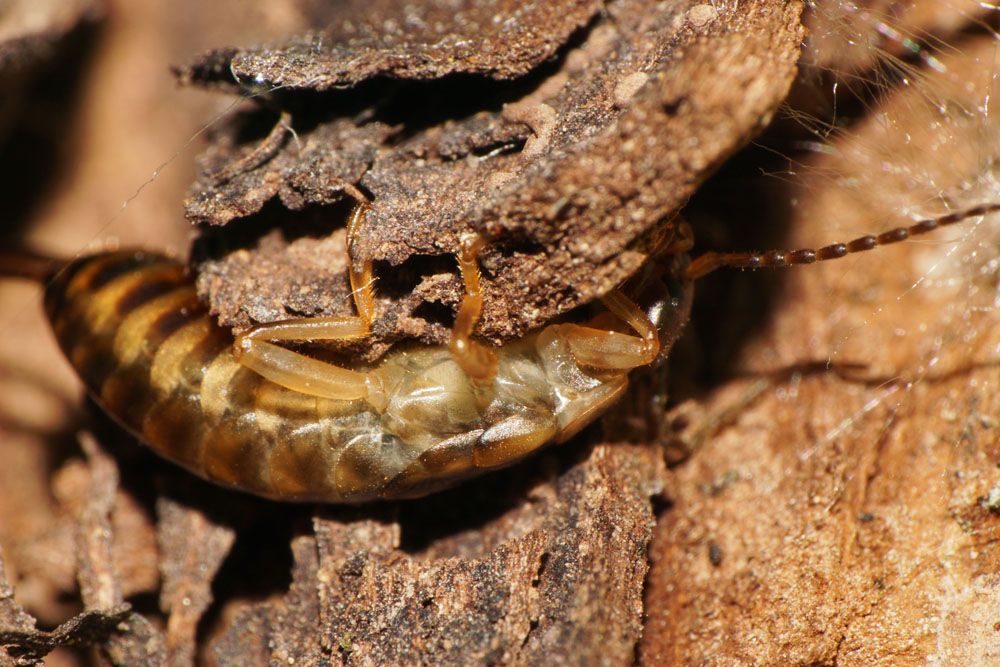
Striped Earwig – Ladidura riparia
Striped Earwigs
Latin Name: Labidura riparia
Common Name: Earwigs, Striped earwigs, Shore earwig, Riparian earwig, Tawny earwig.
Appearance: European earwigs are 16-30 mm long insects belonging to the family Labiduridae. They have a pair of characteristic appendages that look like forceps at the end of the abdomen called cerci. Cerci are yellow with red ends. They have a reddish black head and abdomen with the two dark stripes running down the length of pronotum, giving them the name “Striped earwigs.” They use cerci in their defense and bend over like a scorpion during an alarming situation. These cerci are more curved in males as compared to females. They have long hindwings folded under a hard wing cover (Forewing) but fly very rarely. They have chewing-type mouthparts and 14 segmented antennae.
Host Plants or Food: Earwigs prey on plant pests such as Aphids, Mites, Scales, Caterpillar, etc. It may also eat plant material but cause no economic damage.
Territory: North America (In Southern States)
Mode of Damage: Beneficial Garden Insect. They prey on plant pests and are considered biocontrol agents.
Habits and Life History:
- Striped earwigs don’t like heat and dryness, so they usually live in cool and dark places during the day and come out at night.
- They mostly hide themselves under debris, leaves, rocks, and tree bark.
- Female earwigs lay eggs in winter into the funnel they dig in the ground. They lay 30 or more eggs. Eggs of earwigs are white or cream-colored and oval-shaped. Just before hatching, eggs become large and brown.
- Eggs hatch into nymphs that are light brown and remain there in eggs till first molting and fed by their mother.
- The second instar may come out during the night, feed, and return back to the nest during the day. Later, instars feed freely on their own. They undergo almost 6 moltings before maturing into an adult striped earwig.
- They have 2-3 generations per year. The adults hibernate during winter under the soil.
